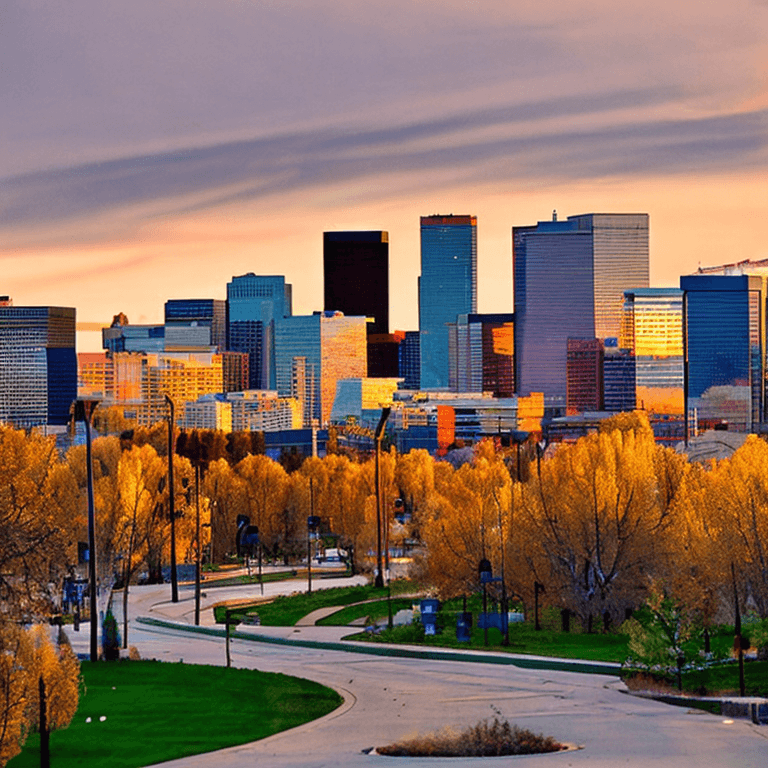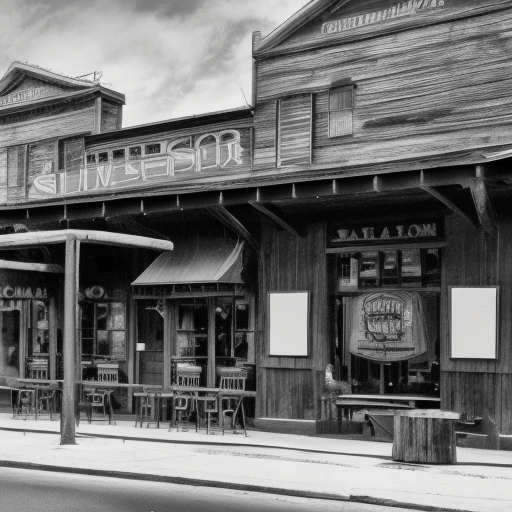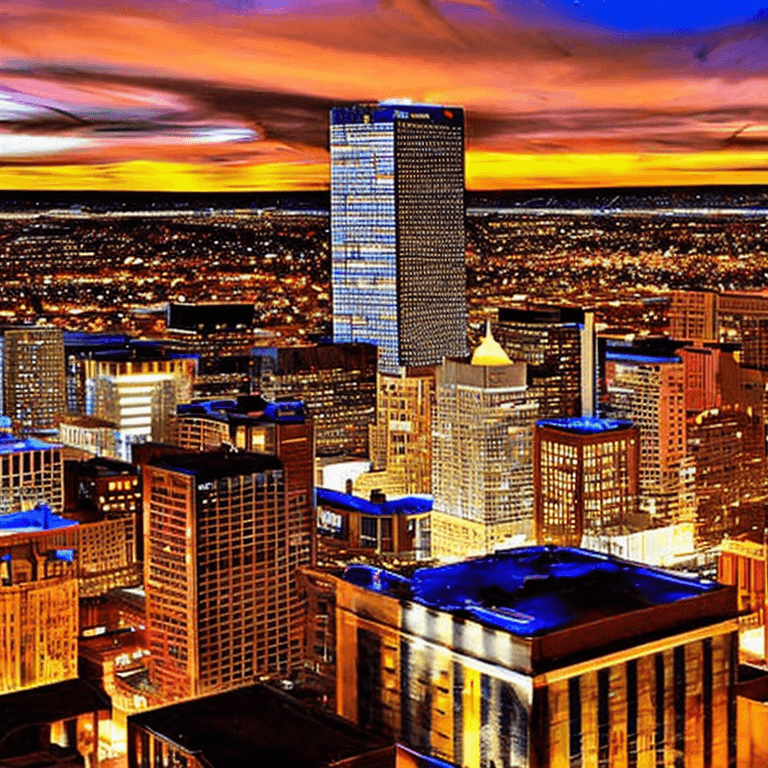The History of Denver
Denver's history is full of people and events that have shaped the city. From the gold rush to the revival of Denver after oil.
Early Denver was a crossroads where people traveled between the Rocky Mountains and Great Plains. Evidence from archaeology at prehistoric sites of indigenous people suggests that peoples of diverse cultures mixed and interacted here.
Gold Rush
The Gold Rush of 1849, or the first time that there was a gold boom in Denver, was a significant event in the city's history. Many people came to the city looking for fortune and a new start in life.
The first gold discoveries were made in Gilpin and Clear Creek Counties, west of Denver. Several prospectors made successful strikes in the area, such as George Jackson in Idaho Springs and John Gregory in Cherry Creek.
These discoveries were not enough to revitalize the gold rush. To attract new miners, it took a lot publicity. Boosters such as William N. Byers, editor of Denver's first newspaper, the Rocky Mountain News, started campaigns to attract gold-lovers.
Over 100,000 men had already left their homes in Kansas and Nebraska and traveled across the plains to the mountains of Colorado by the spring of 1859. They were known as "Fifty-Niners."
Some were looking for the gold found along gulches, like Clear Creek and Gold Run in Boulder County. Other gold-seekers were more ambitious, looking for gold buried in the mountains of Colorado.
John Gregory, a Georgian, made the first major gold discovery in the region around Central City. He was a red-haired, wiry cracker who had a keen eye for the gold in his home country.
Gregory was followed by many other prospectors who made gold strikes in Clear Creek and Gold Run. Those who continued their explorations in the mountains were rewarded with the discovery of rich gold from the placer.
The gold rush made Colorado a mining hub and a railroad-dependent city. The city grew quickly and was declared the capital of Colorado Territory in 1881. Today, Denver is a vibrant city that is home to a myriad of museums, parks and other attractions that pay tribute to its rich history.
Silver Rush
In the 19th century, Colorado's main economic engine was silver and gold mining. It produced more than $1 billion in revenues and made a number early millionaires, including Nathaniel Hill and Horace Tabor.
The frenzied rush began in 1849 when a group of California prospectors traveled west to search for their fortune. They discovered some gold in Ralston Creek, which is near the present-day Arvada, and later discovered placer gold (veins of gold embedded in the rock) at Cherry Creek. These discoveries were teasers, however, they piqued interest of a handful of Midwestern and Eastern investors who quickly jumped aboard and started to investigate the area more.
Tens of thousands of people fled to the northeastern region of Colorado as the word spread. They came for many reasons, ranging from seeking a fresh beginning to being caught in tensions between sections North and South.
However, some were motivated by the promise of riches, due to their reading of promotional literature, such as Horace Greeley's "Go West, Young Man." They also had an insatiable desire for adventure.
Whatever their motives the majority of them made their fortunes in silver or gold mining. The discovery of silver in the 1860s, together with the Bland-Allison Act of 1878, which required Congress to purchase 4.5 million pounds of silver each month, increased the value of the metal dramatically and enabled the construction of additional mines throughout the state.
The economy crashed after the silver boom, and many mining districts struggled to survive. Durango and Ouray in southwest Colorado were able to hold their own while others, like Creede or Silverton in the San Juan Mountains, floundered.
Culture Rush
Denver is a cultural center. The city is home to one of the biggest art institutions in the United States, and is home to world-class museums which celebrate the past and present.
A visit to the Denver Art Museum, for instance, is certain to impress with its collection that spans prehistory to the 21st century. It's also situated across from the Clyfford Still Museum which houses the largest collection of art by an American abstract expressionist.
Denver transformed its status from a frontier city to a modern, prosperous metropolis as the culture craze continued. This change was enabled by a new train line that connected Denver with towns and cities across the country.
The new route also brought more money to the city, leading to an increase in population growth. When World War II started, Denver was the third largest city in the United States with a population of more than 322,000.
The US Mint was another factor which contributed to the development of Denver. It was founded in Denver in 1878. Today, the mint is a popular tourist destination and tours are available every day.
It's a must to visit the Molly Brown House, the former residence of Denver's first woman mayor. The Victorian-style house, which was restored in Victorian style, provides an interesting look into Colorado's history and the present.
Though the Gold Rush helped to shape Denver's image however, it wasn't without difficulties. Many of the people who left their homes in the eastern part of America to seek the riches of the west were ill-equipped to travel. They often traveled in wagons , and were prone to dehydration, starvation, and even death. These circumstances led to a an increase in xenophobia and fear that led to the formation of the Ku Klux Klan.
Oil Boom
Denver City was transformed by the oil boom of 1849. It was a time in which people flocked from all over the country to work in the oil fields. The boom resulted in a huge demand for housing, restaurants, hotels, water systems and more and all of these were needed to support the growing number of workers in the western part of Colorado.
To accommodate workers and visitors to accommodate workers and visitors, several towns were constructed in the region. Some towns were small and had only a few restaurants and shops and others were large oil towns that had restaurants, hotels and recreation facilities.
Gearhart was among the most well-known, and was situated about half an hour from the Patterson well. The town was home to a variety of businesses including general stores and a grocery store and a barbershop/poolhall as well as machine shops and many other services.
The town was a favorite among workers from other areas due to the fact that it was affordable for lodging and was easy to access. It also featured an outdoor dance hall, where guests and laborers could dance.
The boom was a great time for certain, but it also brought a lot of hardship to Denver and the surrounding communities. Certain towns and families would lose their homes and others would become into bankruptcy or struggle to come up with the money.
In addition that, many towns were faced with the shortage of workers as people from other regions of the nation were drawn by the high wages and opportunities for employment in western Colorado. The people who didn't work in the mines required accommodation, improve wooden water lines to handle increased flows, and serve meals in restaurants that were crowded with tourists and workers who had just arrived.
The Denver-Julesburg Basin is one of the largest oil shale fields in the world. While the state's oil industry remains an important part of the economy, it's not the only one. To drive economic growth, companies are focusing on other industries such as finance and cleantech. The production of oil and gas isn't likely to grow as quickly as it did when this law was passed.
Boom and Bust Cycle
Boom and bust cycles are a pattern of economic growth and decline that occurs in capitalist countries. Booms occur when the economy is expanding and jobs are plentiful and investors get high returns on their investments. The boom comes to an end and the economy begins to shrink. People lose their jobs, and investors lose their capital.
During the boom, the central bank makes it easier for people and businesses to borrow money by lending it at low interest rates. They can use the funds to invest in houses, stocks in the technology sector or businesses and expect a high return.
Related: Denver Car Accident Attorney
Once the economy starts to slow down, businesses begin to cut back on their spending, and employees begin losing their jobs. During the downturn businesses, business owners start to sell their assets, including houses and stock portfolios in an effort to raise funds to pay the payroll.
Colorado's history has been marked by cycles of boom and bust, from the gold rush in 1849 until the panic of 1893. However Colorado's economy is now more stable and does not depend on mining.
The energy boom created Denver a major metropolis in the 1980s with its tall skyscrapers. Denver was dubbed the "Mile High City."
But the frenzied construction business proved to be one of the biggest destabilizers of Denver's economy. During the energy boom the developers would often construct projects simply because they had money to build them.
This trend has resurfaced in the current real estate boom, specifically along the Front Range. It's possible that Colorado's economy slips back into the boom-and-bust cycle.
Denver, Colorado Car Accident Resources:


